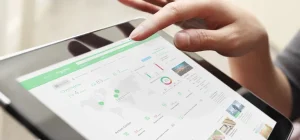Smart grids are the future for utilities. Their many benefits include improving reliability and efficiency, increasing flexibility, and allowing utilities to better integrate renewable resources. In this interview with Edifícios e Energia magazine, my colleague Alain GLATIGNY, Smart Grid Innovation Vice President at Schneider Electric, discusses these benefits and provides suggestions for what the European Union must do to support smart grids development.
What technological phase is smart grid in now?
Solutions for smart grids are available to respond to new distribution network needs. Distribution system operators (DSOs) have already been able to extract more capacity out of their networks by using smart technologies and techniques.
There are national and multinational demonstration/pilots, deployments and projects in the feasibility and design phase. One example is GreenLys, a full-scale smart grid demonstration project in France (with full results expected to be published this month). GreenLys tests the operation of a smart grid over the entire electricity supply chain: from the producer to the end consumer, including transportation, distribution and supply.
In practical terms, what will the transition to smart grids mean?
The implementation of smart grids will provide solutions to the issues that DSOs are currently facing, such as increasing safety and reliability without exponentially growing costs, as well as new challenges like integrating renewable resources effectively, increasing flexibility, incorporating users as active stakeholders, and deploying secure and reliable communications at all levels of the distribution network. More smart grid capabilities are being introduced into medium voltage/low voltage substations to meet these expectations.
What is the potential of smart grids with regard to energy efficiency?
Smart grid technology can improve energy efficiency for the DSO across their range of customers – whether commercial, industrial, prosumers, or household.
Let’s take a look at how prosumers, specifically, are benefitting. The cost of local production has become more competitive and technologies are available to optimize systems. They can be used to empower consumers, allowing them to act as prosumers, meaning consumers could control both their energy demand and supply. By learning to modify their energy use profile on demand, flexibility is encouraged and overall energy efficiency is greatly enhanced.
How can smart grids improve reliability?
We know that DSOs have to improve grid reliability and efficiency while also enhancing power quality. They must also support a higher ratio of distributed energy resources (DER).
Here is an example of an innovative smart grid solution that achieves this goal:
Schneider Electric and Stedin, one of the largest utilities in the Netherlands, worked closely together to develop and test a decentralized self-healing grid solution in downtown Rotterdam to decrease the duration of a potential power outage. It’s based on the idea of motorizing existing ring main units and establishing peer-to-peer communication. This upgrade paid off in January 2015 when Stedin faced a blackout due to a broken cable. The fault was resolved in 18 seconds instead of 2 hours (on average) with the network automatically reconfiguring itself to resupply affected customers via another path.
Other solutions are available to improve technical and non-technical losses through reconfiguring networks, implementing more efficient equipment, identifying unbalanced feeders and localizing network losses.
New smart technologies exist, allowing utilities to transform their networks at affordable costs, and equipment vendors can help utilities identify the most appropriate solutions and recommend the most suitable deployment process.
Don’t miss part two of this interview to learn more about barriers to smart grid implementation and how a better regulatory framework can help tackle these obstacles.
For more about smart grids and what the future has in store for utilities, download our free ebook, Powering an Always-on World.



